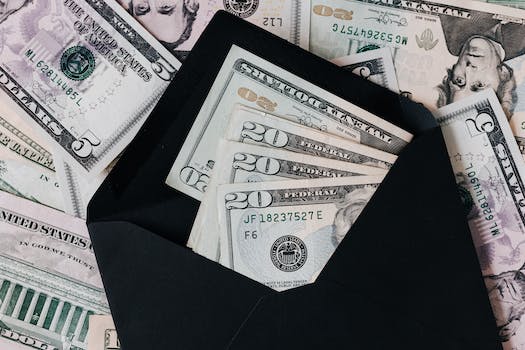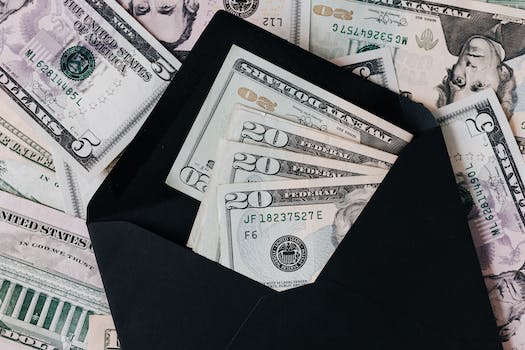Ways To Save Money Every Day
Introduction

Introduction: Saving money is an essential aspect of financial stability and security. However, it can be challenging to find ways to save money every day without compromising your lifestyle. In this article, we will explore some practical and effective ways to save money daily, which can help you achieve your financial goals.
10 Simple Tips for Cutting Your Daily Expenses
Ways To Save Money Every Day
Saving money is a goal that many people have, but it can be challenging to achieve. However, there are simple ways to cut your daily expenses and save money every day. Here are ten tips that can help you save money without sacrificing your quality of life.
1. Make a budget
The first step to saving money is to make a budget. A budget helps you track your expenses and identify areas where you can cut back. Start by listing all your monthly expenses, including rent, utilities, groceries, and transportation. Then, compare your expenses to your income and see where you can make adjustments.
2. Cook at home
Eating out can be expensive, so try cooking at home instead. Not only is it cheaper, but it’s also healthier. Plan your meals in advance and buy groceries in bulk to save money. You can also try meal prepping to save time and money.
3. Use coupons
Coupons are a great way to save money on groceries and other household items. You can find coupons online or in your local newspaper. Make sure to check the expiration date and use them before they expire.
4. Cancel subscriptions
Do you have subscriptions that you don’t use or need? Cancel them. This includes gym memberships, streaming services, and magazine subscriptions. You can always sign up again later if you decide you want them.
5. Use public transportation
If you live in a city with public transportation, use it instead of driving. It’s cheaper and better for the environment. You can also walk or bike to your destination if it’s close enough.
6. Buy generic brands
Generic brands are often just as good as name brands, but they’re cheaper. Try buying generic brands for groceries, household items, and medication.
7. Turn off lights and electronics
Turning off lights and electronics when you’re not using them can save you money on your electricity bill. You can also unplug electronics when you’re not using them to save even more.
8. Shop around for deals
Before making a purchase, shop around for deals. Compare prices at different stores and online retailers. You can also wait for sales or use price comparison websites to find the best deals.
9. Use cash instead of credit cards
Using cash instead of credit cards can help you avoid overspending. When you use cash, you can see how much money you have left and avoid going over your budget.
10. DIY
Do-it-yourself projects can save you money on home repairs and renovations. You can also make your own cleaning products and beauty products to save money.
In conclusion, saving money doesn’t have to be difficult. By making a budget, cooking at home, using coupons, canceling subscriptions, using public transportation, buying generic brands, turning off lights and electronics, shopping around for deals, using cash instead of credit cards, and DIY projects, you can cut your daily expenses and save money every day. Start small and make gradual changes to your lifestyle. Over time, you’ll see the benefits of your efforts and be able to achieve your financial goals.
How to Create a Budget and Stick to It
Saving money is a crucial aspect of financial stability. However, it can be challenging to save money when you have bills to pay and other expenses to cater to. Creating a budget and sticking to it is one of the most effective ways to save money every day. In this article, we will discuss how to create a budget and stick to it.
The first step in creating a budget is to determine your income. This includes your salary, bonuses, and any other sources of income. Once you have determined your income, you need to list all your expenses. This includes your rent or mortgage, utilities, groceries, transportation, and any other expenses you have.
After listing your expenses, you need to categorize them into fixed and variable expenses. Fixed expenses are those that remain constant every month, such as rent or mortgage payments. Variable expenses, on the other hand, are those that fluctuate every month, such as groceries and entertainment.
Once you have categorized your expenses, you need to prioritize them. This means that you need to determine which expenses are essential and which ones are not. Essential expenses are those that you cannot do without, such as rent or mortgage payments, utilities, and groceries. Non-essential expenses, on the other hand, are those that you can do without, such as entertainment and eating out.
After prioritizing your expenses, you need to allocate your income to each expense category. This means that you need to determine how much money you will spend on each expense category every month. You should allocate more money to essential expenses and less money to non-essential expenses.
Once you have created your budget, you need to stick to it. This means that you need to track your expenses and ensure that you do not overspend. One way to do this is to use a budgeting app or software. These tools can help you track your expenses and alert you when you are about to overspend.
Another way to stick to your budget is to avoid impulse buying. Impulse buying is when you buy something that you do not need or had not planned to buy. To avoid impulse buying, you should make a shopping list before going to the store and stick to it. You should also avoid shopping when you are hungry or tired, as this can lead to impulse buying.
You should also look for ways to save money on your essential expenses. For example, you can save money on groceries by buying in bulk or shopping at discount stores. You can also save money on utilities by turning off lights and appliances when you are not using them.
In conclusion, creating a budget and sticking to it is one of the most effective ways to save money every day. To create a budget, you need to determine your income, list your expenses, categorize them into fixed and variable expenses, prioritize them, and allocate your income to each expense category. To stick to your budget, you need to track your expenses, avoid impulse buying, and look for ways to save money on your essential expenses. By following these tips, you can save money every day and achieve financial stability.
The Benefits of Meal Planning and Grocery Shopping on a Budget
Saving money is a goal that many people strive for, but it can be challenging to achieve. However, there are simple ways to save money every day, and one of them is through meal planning and grocery shopping on a budget. This approach can help you save money, eat healthier, and reduce food waste.
Meal planning involves deciding what meals you will eat for the week or month and creating a shopping list based on those meals. This approach can help you avoid impulse purchases and reduce the likelihood of buying items that you do not need. Additionally, meal planning can help you save time and reduce stress by eliminating the need to decide what to cook every day.
When creating a meal plan, it is essential to consider your budget. You can save money by choosing recipes that use affordable ingredients or by buying items in bulk. For example, you can buy a large bag of rice or beans, which can be used in multiple meals, instead of buying smaller portions. Additionally, you can choose seasonal produce, which tends to be cheaper and fresher.
Another way to save money on groceries is by shopping at discount stores or using coupons. Many grocery stores offer discounts on certain items or have loyalty programs that can help you save money. Additionally, you can use apps or websites that offer coupons or cashback on purchases.
When grocery shopping, it is essential to stick to your list and avoid buying items that are not necessary. One way to do this is by avoiding shopping when you are hungry, as this can lead to impulse purchases. Additionally, you can compare prices and choose the most affordable option.
Meal planning and grocery shopping on a budget can also help you eat healthier. When you plan your meals, you can ensure that you are getting a balanced diet and avoid relying on fast food or processed meals. Additionally, buying fresh produce and cooking at home can help you reduce your intake of unhealthy ingredients such as salt, sugar, and preservatives.
Reducing food waste is another benefit of meal planning and grocery shopping on a budget. When you plan your meals, you can buy only what you need and avoid buying items that will go to waste. Additionally, you can use leftovers to create new meals or freeze them for later use.
In conclusion, meal planning and grocery shopping on a budget can help you save money, eat healthier, and reduce food waste. By creating a meal plan and shopping list based on your budget, you can avoid impulse purchases and choose affordable ingredients. Additionally, you can shop at discount stores or use coupons to save money. Eating healthier and reducing food waste are additional benefits of this approach. By making small changes to your grocery shopping habits, you can save money every day and achieve your financial goals.
DIY Home Repairs and Maintenance to Save Money
As we go about our daily lives, we often overlook the small things that can add up to significant savings over time. One area where we can make a big difference is in our home repairs and maintenance. By taking a DIY approach to fixing things around the house, we can save money on labor costs and avoid the need for expensive professional services.
One of the easiest ways to save money on home repairs is to learn how to do basic maintenance tasks yourself. This includes things like changing air filters, cleaning gutters, and checking for leaks. By doing these tasks regularly, you can prevent more significant problems from developing and save money on repairs in the long run.
Another way to save money on home repairs is to invest in quality tools and equipment. While it may be tempting to buy the cheapest tools available, investing in high-quality tools can save you money in the long run. Not only will they last longer, but they will also make your DIY projects easier and more efficient.
When it comes to more significant home repairs, such as fixing a leaky roof or repairing a broken appliance, it may be tempting to call in a professional. However, with a little research and some basic knowledge, many of these repairs can be done yourself. There are countless resources available online, including tutorials and how-to videos, that can guide you through the process step-by-step.
Of course, there are some repairs that should always be left to the professionals. Electrical work, for example, can be dangerous and should only be done by a licensed electrician. Similarly, if you are not comfortable working on your plumbing or HVAC system, it is best to call in a professional.
One of the most significant benefits of DIY home repairs is the sense of accomplishment that comes with completing a project yourself. Not only will you save money, but you will also gain valuable skills and knowledge that can be applied to future projects. Additionally, by taking a DIY approach, you can customize your repairs to your specific needs and preferences, rather than relying on a professional to do it for you.
In conclusion, there are many ways to save money on home repairs and maintenance. By learning basic maintenance tasks, investing in quality tools, and taking a DIY approach to more significant repairs, you can save money on labor costs and avoid the need for expensive professional services. While there are some repairs that should always be left to the professionals, there are countless resources available online that can guide you through the process of many DIY projects. By taking a proactive approach to home repairs and maintenance, you can save money and gain valuable skills and knowledge in the process.
Maximizing Your Savings with Cashback Apps and Rewards Programs
Saving money is a goal that many people strive to achieve. However, it can be challenging to find ways to cut back on expenses without sacrificing the things we enjoy. Fortunately, there are several cashback apps and rewards programs that can help you maximize your savings and make every dollar count.
One of the most popular cashback apps is Ibotta. This app allows you to earn cashback on purchases made at participating retailers, including grocery stores, restaurants, and online retailers. To use Ibotta, simply browse the app for offers on products you plan to purchase, then scan your receipt after making your purchase to receive cashback. Ibotta also offers bonuses for completing certain tasks, such as redeeming a certain number of offers or referring friends to the app.
Another popular cashback app is Rakuten (formerly known as Ebates). Rakuten offers cashback on purchases made at over 2,500 retailers, including Amazon, Macy’s, and Walmart. To use Rakuten, simply browse the app for offers on products you plan to purchase, then click through to the retailer’s website to make your purchase. Rakuten will then track your purchase and credit your account with cashback. Rakuten also offers bonuses for referring friends to the app and for making a certain number of purchases within a certain timeframe.
In addition to cashback apps, there are also several rewards programs that can help you save money. One popular rewards program is Swagbucks. Swagbucks allows you to earn points (or “Swagbucks”) for completing tasks such as taking surveys, watching videos, and shopping online. You can then redeem your Swagbucks for gift cards to popular retailers such as Amazon, Target, and Starbucks. Swagbucks also offers bonuses for referring friends to the program and for reaching certain point milestones.
Another popular rewards program is MyPoints. MyPoints allows you to earn points for completing tasks such as taking surveys, watching videos, and shopping online. You can then redeem your points for gift cards to popular retailers such as Amazon, Walmart, and Best Buy. MyPoints also offers bonuses for referring friends to the program and for making a certain number of purchases within a certain timeframe.
Using cashback apps and rewards programs can be a great way to maximize your savings and make every dollar count. However, it’s important to use these programs wisely and not let them encourage you to overspend. To avoid overspending, set a budget for yourself and stick to it. Only purchase items that you need or that fit within your budget, and don’t let the promise of cashback or rewards tempt you into making unnecessary purchases.
In addition to using cashback apps and rewards programs, there are several other ways to save money every day. One way is to cut back on eating out and instead cook meals at home. Not only is cooking at home typically cheaper than eating out, but it can also be healthier and more enjoyable. Another way to save money is to cut back on subscriptions and memberships that you don’t use or need. For example, if you rarely go to the gym, consider canceling your gym membership and finding ways to exercise at home or outside instead.
Overall, there are many ways to save money every day, and using cashback apps and rewards programs is just one of them. By setting a budget, being mindful of your spending, and finding ways to cut back on expenses, you can maximize your savings and achieve your financial goals.
Conclusion
Conclusion: There are many ways to save money every day, such as creating a budget, cutting unnecessary expenses, using coupons and discounts, and finding ways to earn extra income. By implementing these strategies, individuals can improve their financial situation and achieve their long-term goals. It is important to be consistent and disciplined in saving money, as even small changes can add up over time.






